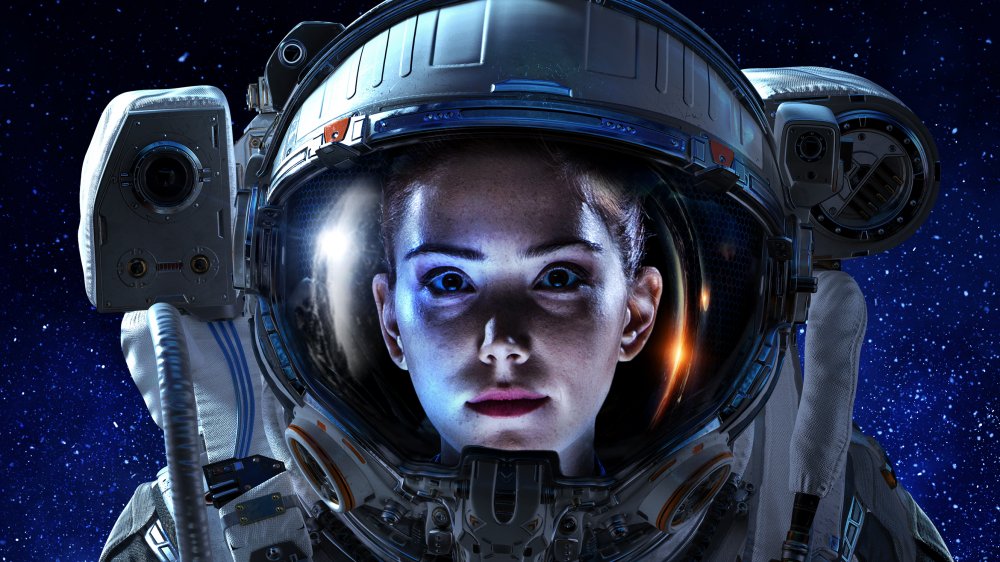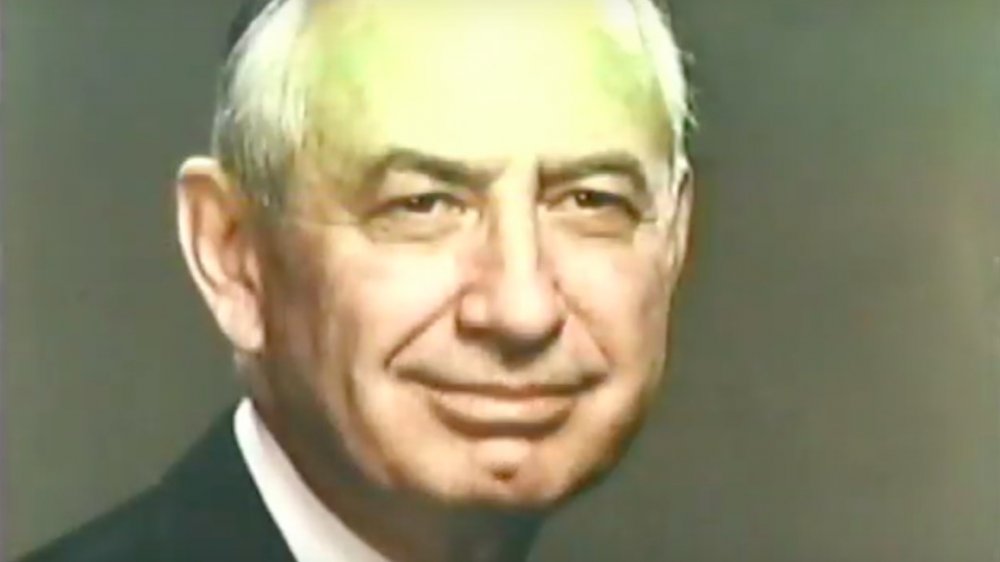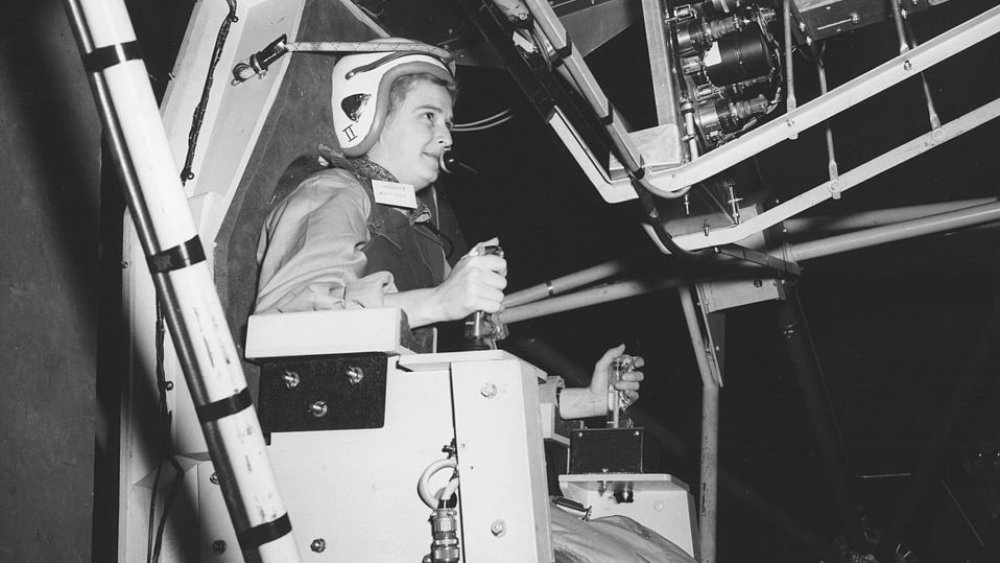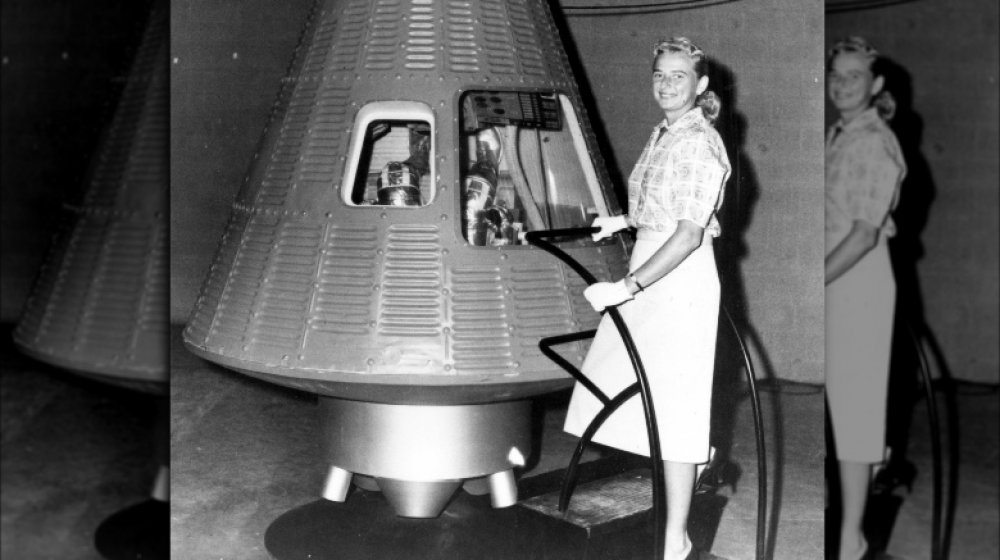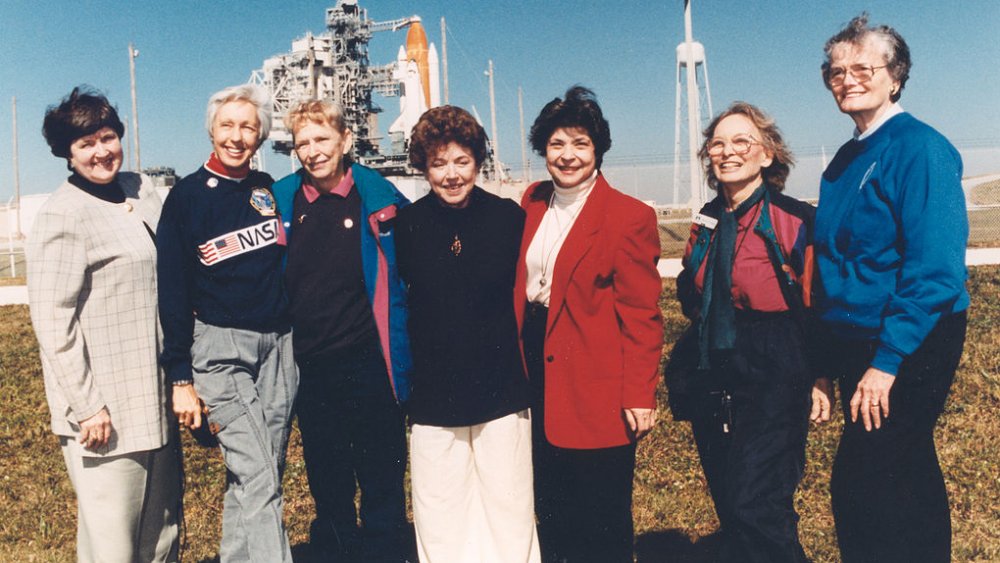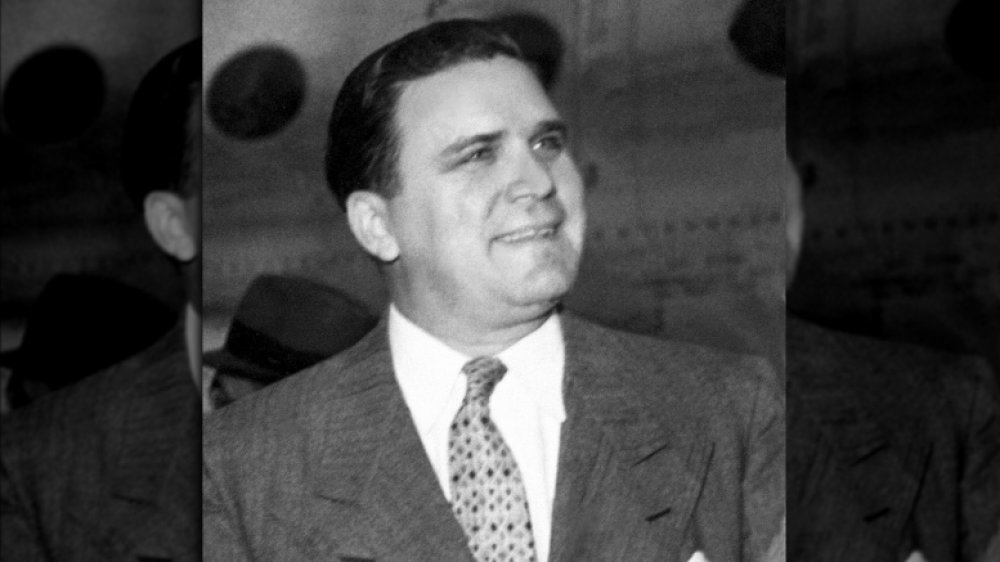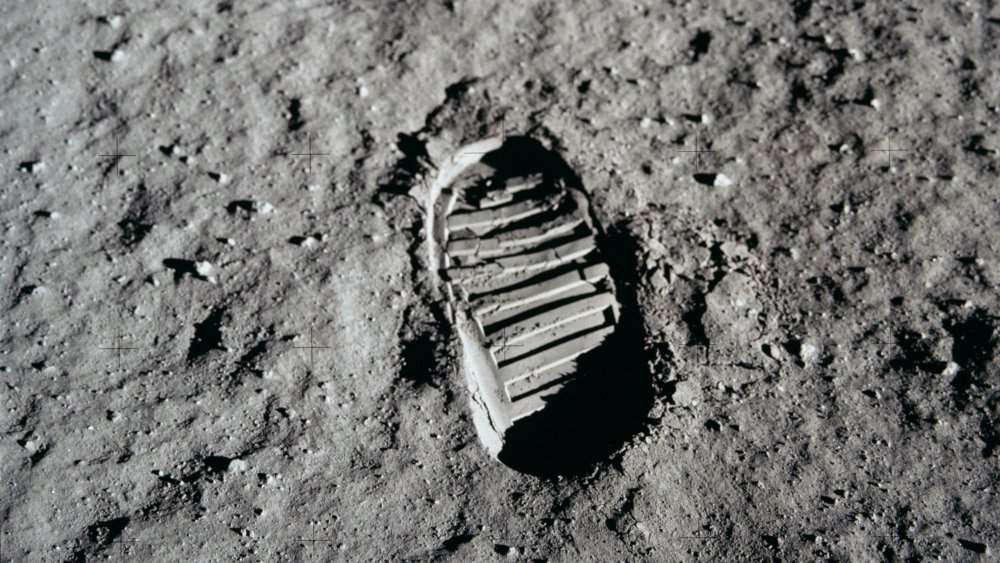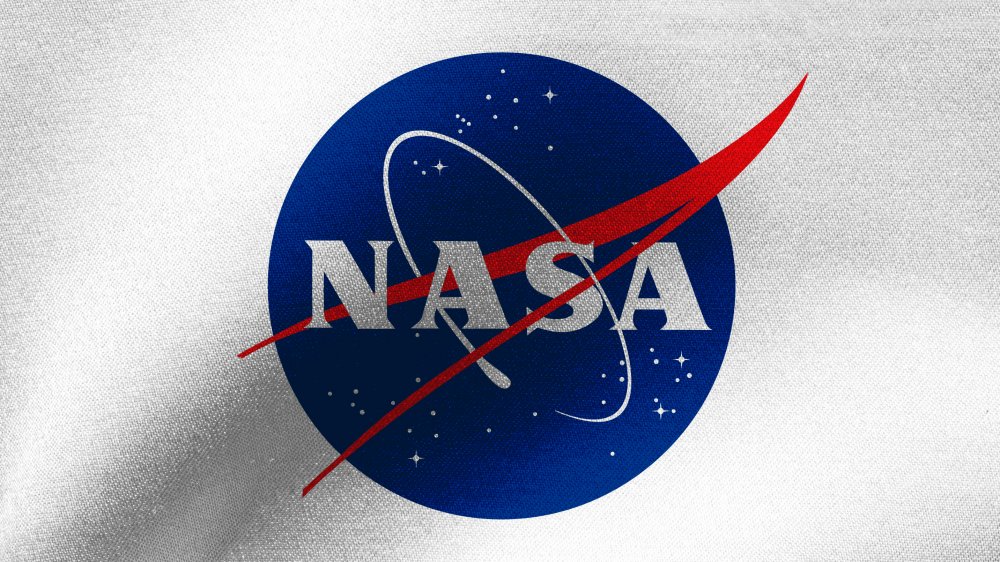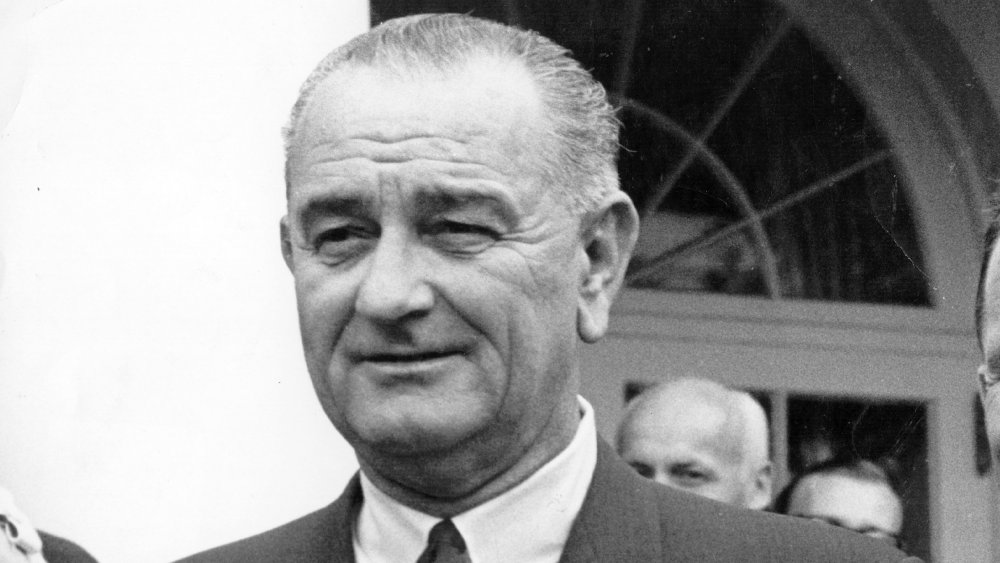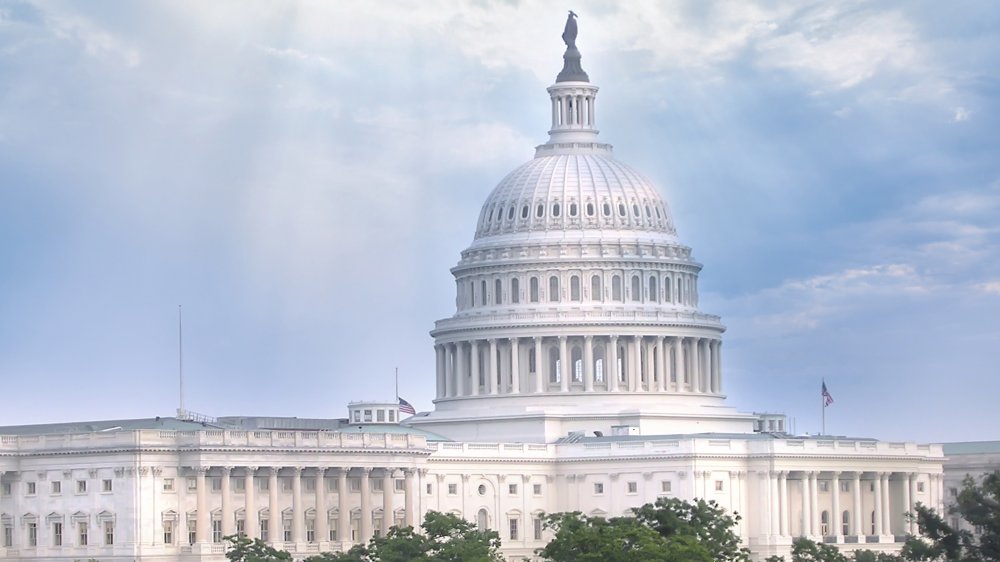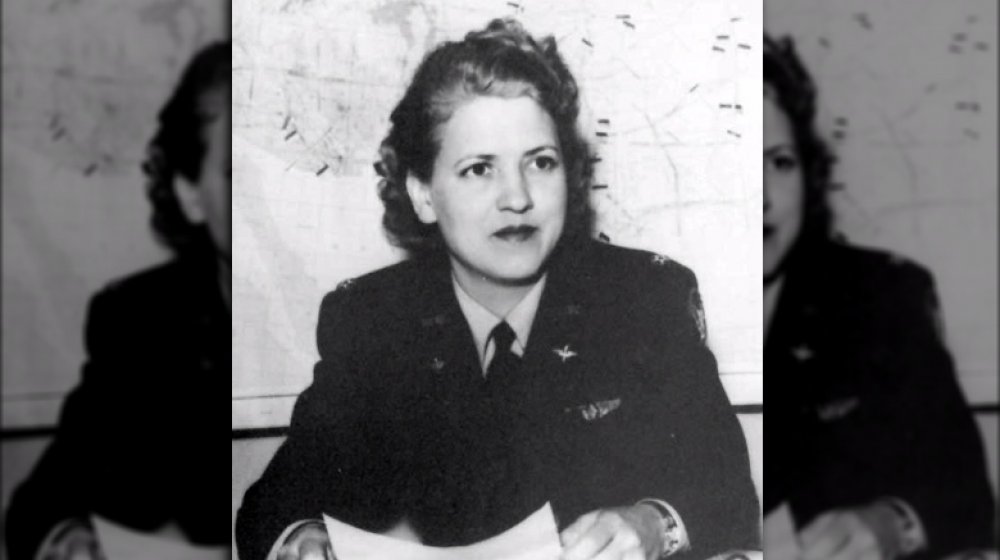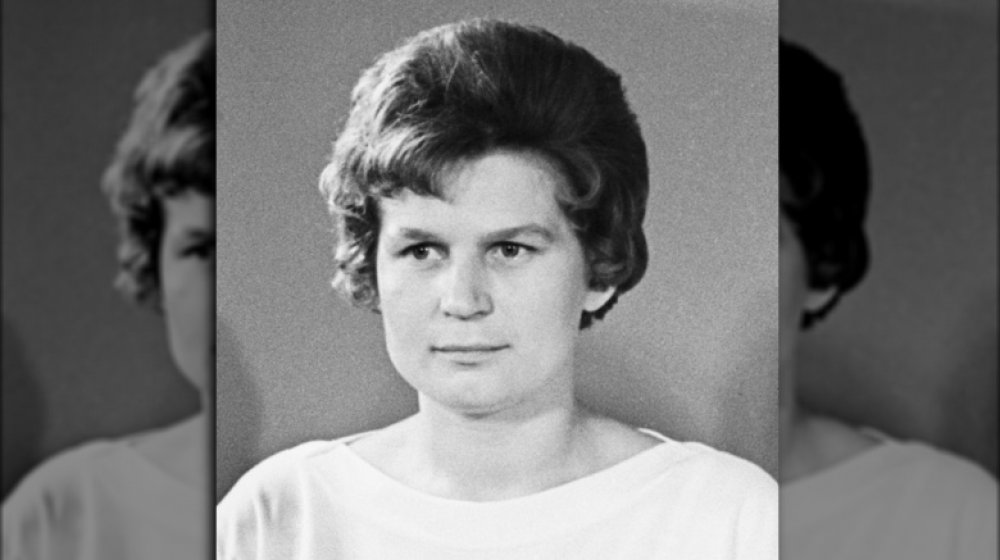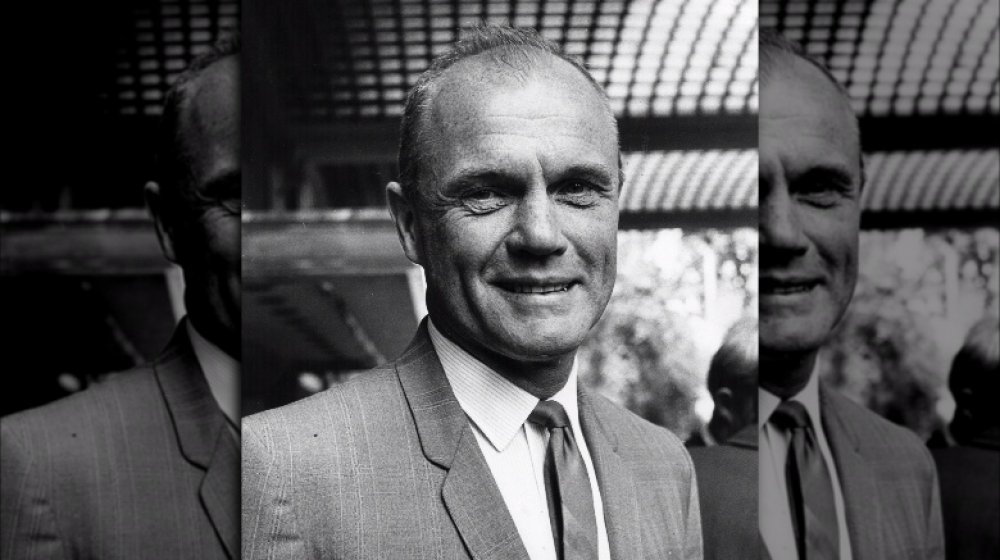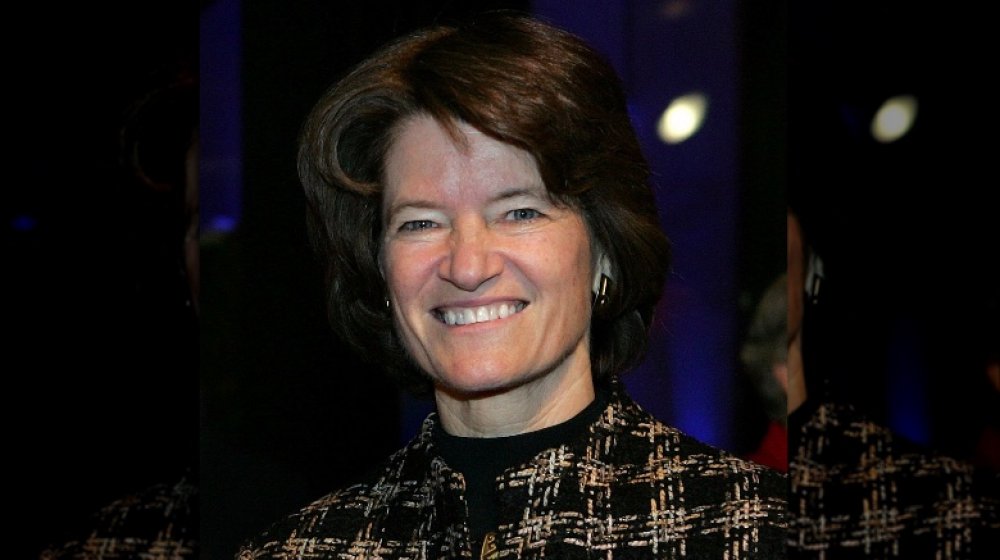The Untold Truth Of Women In Space
The first American woman in space was Sally Ride, but that's not the untold truth about the long road female astronauts had to travel to achieve the same opportunities as their male counterparts. That history began long before Sally Ride, whose accomplishments post-dated those of her predecessors by about 20 years. The history of women in space began with a group of women who were known to history — when history chooses to mention them — as the Mercury 13.
Yes, it's true that none of those American women ever made it out of the Earth's atmosphere, but that isn't because they weren't capable and it isn't because they didn't work hard enough. There was plenty of evidence that women could be astronauts long before NASA ever took them seriously enough to let them try. So what happened? Why did women have to wait so long to join men in zero gravity? Here's the untold truth, and it's an ugly one.
Science knew women would make good astronauts almost from the beginning
If you're just going by strict, untainted, unpolitical science, it's not only clear that women make fine astronauts, it's also pretty clear that they make better astronauts than men. Now before you start shrieking in righteous indignation, we're talking at this point about strictly physical differences between men and women — as far as intellectual capability is concerned, that will always be down to the individual and has nothing to do with gender. But physically, women in general are just better suited to being in space. Sorry, guys.
According to History, during the early years of the Mercury program, there were two men who thought women ought to be included in the space program selection process. Air Force Brigadier General Donald Flickinger and Dr. Randy Lovelace (the latter did all the official physical examinations of potential astronauts) both thought that women were better suited to becoming astronauts because their physical requirements are less. They are, on average, smaller and lighter than men, which means they require fewer calories and less oxygen. They are more resistant to radiation and less likely to develop heart problems. And because space missions need to carefully consider every single pound, from a practical point of view it just makes more sense to select astronauts who weigh less. So if you're looking at choosing astronauts based on pure logic, well, it seems like you'd recruit women first. But alas, that wasn't the world of the 1960s.
The unofficial program to recruit and train female astronauts
Lovelace based his conclusions on years of medical data he'd collected from pilots, which he used to create a profile of the perfect astronaut. According to the International Space Hall of Fame at the New Mexico Museum of Space History, Lovelace's data was the basis for the guidelines NASA used when selecting candidates for the space program, and yet NASA was only applying those guidelines to male candidates.
Lovelace tried to convince the Air Force to look at female candidates, and when they declined, he took it upon himself to pursue the idea. With Flickinger's help, he established a privately-funded program entitled "Woman in Space," and set about finding recruits.
The Woman in Space program was not sanctioned by NASA, but candidates had to undergo the same physical fitness tests that NASA's male candidates were subjected to, and they had to take psychological exams that were, in many ways, tougher than the ones male astronauts had to take. That was all out of necessity — if women were going to prove they were just as capable as men, they couldn't have lower standards. Ultimately, Lovelace and Flickinger reasoned that the hard data that would come out of their rigorous recruiting process would be enough to convince NASA that women had a place in the cosmos. Well.
"Woman in Space" finds its first female candidate
Flickinger and Lovelace were sure they were right, and to prove it, they went in search of the best female candidates. It didn't take them too long to find the first one — Jerrie Cobb (pictured), who got her commercial pilot's license at the age of 18 and at the age of 29 had twice as many flight hours as Mercury astronaut John Glenn. According to History, Cobb had all the right stuff — she endured the same crazy physical tests that the Mercury 7 endured, including one in which a three foot rubber hose was inserted into her stomach to test the acid content, and one in which ice water was poured into her ears to stimulate vertigo. She passed all the tests, and on some of them she actually did better than her male counterparts did. Points to the Woman in Space Program. Lovelace saw no reason to keep the test results under wraps, so he released them to the media, and the media went bonkers. Cobb even made Life magazine.
But alas, one success wouldn't be enough to prove the point, so Lovelace recruited two dozen additional women for the program. Many of the new recruits were also able to outperform male candidates who were undergoing the same tests. One, a 21-year-old flight instructor, spent 10 hours in an isolation test, an achievement that far surpassed that of any other female or male recruit. It was looking pretty good for women in space.
Fellow Lady Astronaut Trainees
At the end of the recruitment process, Lovelace had 13 successful candidates. Cobb nicknamed them "Fellow Lady Astronaut Trainees," and the name stuck.
In 1961, Lovelace told the FLATs — also called the Mercury 13 — to prepare for the next stage. They'd be undergoing more tests at the Naval base in Pensacola, and they needed to start preparing. According to Popular Science, the testing at Pensacola would include really grueling stuff like airborne EKGs and centrifuges.
The Mercury 13 had already come a long way, but it's clear that endemic sexism wasn't going to make things easy for them. The media treated the women and their accomplishments as lesser, even cute, compared to the accomplishments of "real" astronauts. During an interview, Jerrie Cobb was asked why "there is a need" for female astronauts, and she replied, "If we're going to send a human being into space we should send the one most qualified. And in certain areas women have a lot to offer, in other areas men do. I think we ought to use both." And after that answer, her interviewer asked an almost incredulous follow-up question: "Can I ask you where these areas are that women have more to offer than the men?" And that pretty much sums up the public opinion at the time.
The Soviets were trying to one-up America again with a woman cosmonaut
The Soviets had already beaten America to the punch when they put cosmonaut Yuri Gagarin into space in April 1961. And they were about to do it again — rumors were circulating that the Soviets had plans to put a woman in space, and not only that, she'd probably thumb her nose at the entire continent while she was up there. The US simply couldn't let that happen.
At least that's what Jerrie Cobb tried to argue. According to Popular Science, Cobb wrote a letter to NASA administrator James Webb, promising that, if allowed to join the astronaut corps, she'd personally claim the title of "first woman in space" for America. It almost worked, too. At a banquet in 1961, Webb introduced Cobb and announced his intention to appoint her as a consultant to NASA on the subject of women in space. At last, the woman's space program was being taken seriously by NASA, the only agency that really mattered. It was starting to look like the FLATs might make it after all.
And then, moonrise
So far, the Soviets had all the firsts that mattered. They'd put the first satellite in space. They put the first living thing in space. They put the first man in space. And every time they achieved one of those firsts, the United States would feel annoyed. The Soviet Union was the bad guy, and it kept showing up the good guys.
Right about the time that Jerrie Cobb got NASA Administrator James Webb to start taking her seriously, President Kennedy was feeling beat. The Russians were clearly winning the space race, and he wanted to up the ante. Putting the first woman in space was an okay goal, but it wouldn't be a spectacular, blow-you-away accomplishment that would capture the hearts and minds of Americans. No, the United States would have to reach higher than that if they were going to stick it to the Soviets. And what could be higher than the moon?
According to Popular Science, a manned mission to the moon was the kind of goal that the U.S. could not only strive for, but quite possibly achieve before the Soviets could figure out how to do it. Neither country had the technology for such a thing, so it was considered even odds. And the moon was a goal that needed a certain kind of American hero — tough, strong, brave ... and male. It was over for the FLATs.
The end of the Woman in Space Program
The Woman in Space Program met its official end on September 12, 1961. Lovelace sent a telegram to the FLATs, which told them the hard truth in as few words as possible. Testing had been canceled, and was unlikely to be rescheduled. The program was over.
But why? Cobb looked for answers, but there were no documents, no official statements, really nothing to base any conclusions on. Officially, it seemed to be because the Navy backed out when it learned that the program wasn't sponsored by NASA. The Pensacola testing hadn't been officially prohibited, but it also hadn't been approved. The Navy claimed it needed NASA approval, and NASA claimed it hadn't given approval because the program wasn't officially recognized.
But records obtained through the Freedom of Information Act told the real truth. "From the beginning, we were walking all over great, giant egos of the men," former FLAT Jerri Truhill told NPR. "They didn't want us. They didn't want women around. And then the one that put the nail in the coffin was Lyndon Johnson." Johnson, who was vice president at the time, had ordered the training to stop.
The FLATs weren't done yet, though
The Woman in Space Program was over, but there was still a chance for America to grab the title of "first woman in space." Cobb held onto the hope that that goal would be enough to convince NASA to have a change of heart, even while it was distracted by the lunar landing program.
Cobb and fellow FLAT Janey Hart met with Lyndon Johnson in the hope of convincing him that the program was worth continuing. They even managed to convince Johnson's aide, Liz Carpenter, who wrote a letter to NASA on Johnson's behalf, asking why women couldn't be included in the space program. In her book Promised the Moon: The Untold Story of the First Women in the Space Race, Stephanie Nolen says Johnson made like he was going to sign the letter, but instead wrote "Let's stop this now!"
Cobb continued to work as an advisor for NASA, but it was clear her position wasn't especially valued. "I'm the most unconsulted consultant in any government agency," she complained after she'd been working for NASA for around a year. By 1961 NASA decided that her position wasn't needed anymore, and her contract wasn't renewed.
There were hearings on women astronauts, but the fix was in
The House of Representatives Committee on Science and Astronautics held a three-day hearing in 1962, mostly just so they could stop the ladies from complaining. According to Popular Science, the hearing was officially supposed to address the qualifications of astronauts, but it was really meant to decide once and for all if NASA was discriminating against female astronaut candidates. And it seems pretty obvious that they already knew what the answer was going to be, long before the hearing actually began.
Cobb and Hart testified on the first day. The United States needed to beat the Soviet Union with the first woman in space, they argued, and there were already 13 excellent female candidates, each of which was capable of claiming the title. The only thing missing was NASA's go-ahead.
Arguing against the women's position was astronaut John Glenn, who said that a woman in space program would get in the way of the moon landing goal. NASA couldn't possibly give its attention to two space programs, he said, especially when one was so much more important in catapulting America to the finish line in the great race between the United States and the Soviet Union.
Jackie Cochran wrecked it for women astronauts
The real blow to the program came with the testimony of Jackie Cochran, an accomplished pilot who held three speed records, three Clifford Burke Haromon trophies, and the world record for high altitude flying. According to Popular Science, during World War II, Cochran had also been placed in charge of the legendary Women's Airforce Service Pilots (WASP) program, which trained more than 1,000 female pilots for non-combat roles like ferrying aircraft, demonstration flights, and target-towing. Cochran had been an early supporter of the Woman in Space Program, and was herself almost the perfect candidate, with one exception — she was in her 50s, and therefore too old to be an astronaut.
Cochran had given financial support to the program, but she wanted to be a part of it, too, and she was overshadowed by the younger Cobb. So she changed her approach — she sided with NASA in the hope that it would support her in her ambition to lead a long-term women in space program.
At the hearing, Cochran argued that the FLATs should sit this one out. There was no need for women to rush into space, she said. Let the men have the moon, and women's time would come later. And that's pretty much exactly what happened, only it was much, much later. So thanks for supporting your sisters, lady.
The first woman in space was a Soviet cosmonaut
While the United States geared up for a moon mission, the Soviets put a woman in space. In 1963, just two years after Yuri Gagarin's flight, Valentina Tereshkova circled the Earth 48 times onboard the Vostok 6. We don't really know if she thumbed her nose at America or not, but it must have been tempting.
Still, Tereshkova's flight was clearly just another first for the Soviets to file away in their box of "things we did before America did them." According to Space.com, the Soviets didn't send another woman into space for nearly 20 years — Svetlana Savitskaya went up in August 1982, less than a year before America finally managed to send its own female astronaut. In fact in 50 years, only three of the 19 women trained by the Soviets or Russians for space flight actually made it into space. So clearly it wasn't really about equal treatment for women or acknowledging their capabilities, it was just about the nose-thumbing.
Yeah, it was totally misogyny
You can make the argument that putting a woman in space would have taken time and money away from the lunar landing mission. It might have even delayed the landing to the point where the Soviets could have gotten there first. But ultimately, that's only a very small part of the picture. The real reason why the Woman in Space Program failed was because NASA and the astronaut program was essentially a boys club, run and staffed by men, and not just any men. The members of the boys club were on the whole military guys, hotshot test pilots, and dudes who weren't used to having their masculinity challenged by women who might turn out to be just as capable as they were.
It wasn't even unspoken. According to Popular Science, at the House of Representatives Committee on Science and Astronautics hearing, John Glenn even said so out loud. "It is just a fact," he said. "The men go off and fight the wars and fly the airplanes and come back and help design and build and test them. The fact that women are not in this field is a fact of our social order. It may be undesirable." And NASA really clung to that idea for a long time afterwards, even as women were making strides in other traditionally male careers and carving out places for themselves, at long last, outside of the home.
Drumroll ... the first American woman in space was ...
Twenty years after the Soviet Union put the first woman in space, America followed its lead. On June 18, 1983, Sally Ride joined the crew of the Space Shuttle Challenger as the first American woman in space. Yes, that's right, we had to wait until the Space Shuttle program before we finally got to see a female astronaut.
According to Space.com, Sally Ride completed two shuttle flights and would have flown a third except that her ambition was cut short by the Challenger disaster in January of 1986. Her contributions to the space program didn't end there, though. She served on the investigation boards for both space shuttle disasters and co-founded Sally Ride Science, a nonprofit organization at the University of San Diego. The goal of Sally Ride Science is to foster an interest in science and technology in young people, especially girls and underrepresented minority students.
The FLATs were not forgotten by the women who came after them. In 1995, astronaut Eileen Collins invited the surviving members of Randy Lovelace's Woman in Space Program to attend her first launch — it was the realization of their dream, if only second-hand, to see an American woman pilot a spacecraft. So the FLATs may not have made it into space, themselves, but they led the way. Many thanks, ladies.
